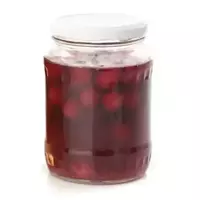Canned plums

Plum is considered one of the most important fruit and fruit trees characteristic of temperate countries. According to experts, the plum came to us either from Italy or from the Caucasus. It is worth noting that plum is the result of hybridization of thorn and wild cherry plum, while it was cultivated in the deepest antiquity, and then first grown in the Caucasus and in Asia Minor.
The plum fruits themselves are very tasty and juicy, but you definitely cannot eat a lot of them - this is due to the distinctive property of the drupe, which consists in its ability to provoke intestinal disorders when consumed excessively. Meanwhile, all kinds of homemade blanks, the famous plum pie or cream cakes are always relevant, in demand and unusually tasty.
In addition, it is customary to harvest plums for future use in a variety of ways. Jam, compotes, jams or unusually healthy prunes are the end products of using plum fruits. And they are not only dried or boiled, but also salted, smoked, frozen and pickled - in other words, preserved.
Canned plums are an excellent way to preserve not only the excellent taste of these fruits, but also a considerable amount of useful substances that are contained in fresh raw materials. Canned plums, pickled in particular, can be a wonderful side dish for many dishes, giving them additional savoury notes.
Many recipes for the preparation of canned plums are known, and all of them, although they have some differences, but the essence remains unnamed - under the influence of acid, the development of microorganisms is suppressed or a large amount of sugar is used in the filling composition, which also acts as a preservative.
As a rule, canned plums are prepared from not fully ripened fruits, which are popularly called Hungarians. In appearance, such drupes are somewhat not pronounced saturated color, characteristic of fully ripe fruits, as well as slightly stiff to the touch. This is necessary so that the finished canned plums do not soften and turn into mashed potatoes over time.
In addition, since the plums do not have enough of their own fruit acid to be preserved, so to speak, in their own juice, vinegar must be used to prepare this drupe. It is grape that is best suited for this purpose, but ordinary table or acetic acid can also be used. To stop the development of harmful microorganisms in canned plums, the acidity of the finished marinade must be about 2 percent. However, additionally, it is also recommended to sterilize or pasteurize the finished product, that is, warm up at a temperature of about 80 degrees.
preserved drains 41.9 kCal
Energy value of canned plums (Ratio of proteins, fats, carbohydrates - ju):
Proteins: 0.8 g (~ 3 kCal)
Fats: 0.3 g (~ 3 kCal)
Carbohydrates: 9.6 g (~ 38 kCal)
Energy ratio (b | y): 8% | 6% | 92%
 Español
Español Français
Français Português
Português Русский
Русский 简体中文
简体中文 繁體中文
繁體中文 日本語
日本語 한국어
한국어 العربية
العربية Türkçe
Türkçe Қазақ
Қазақ Deutsch
Deutsch Italiano
Italiano Українська
Українська
